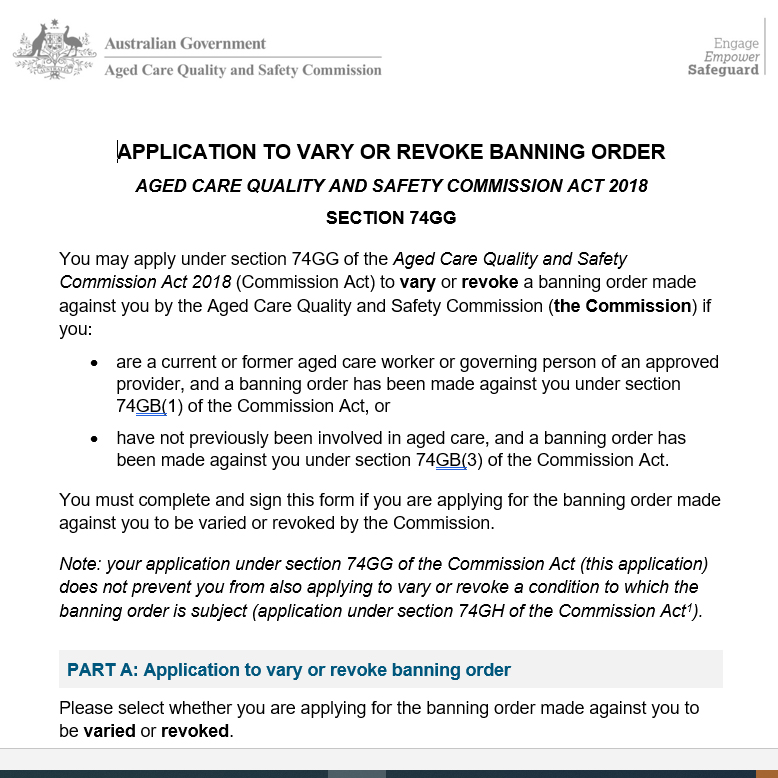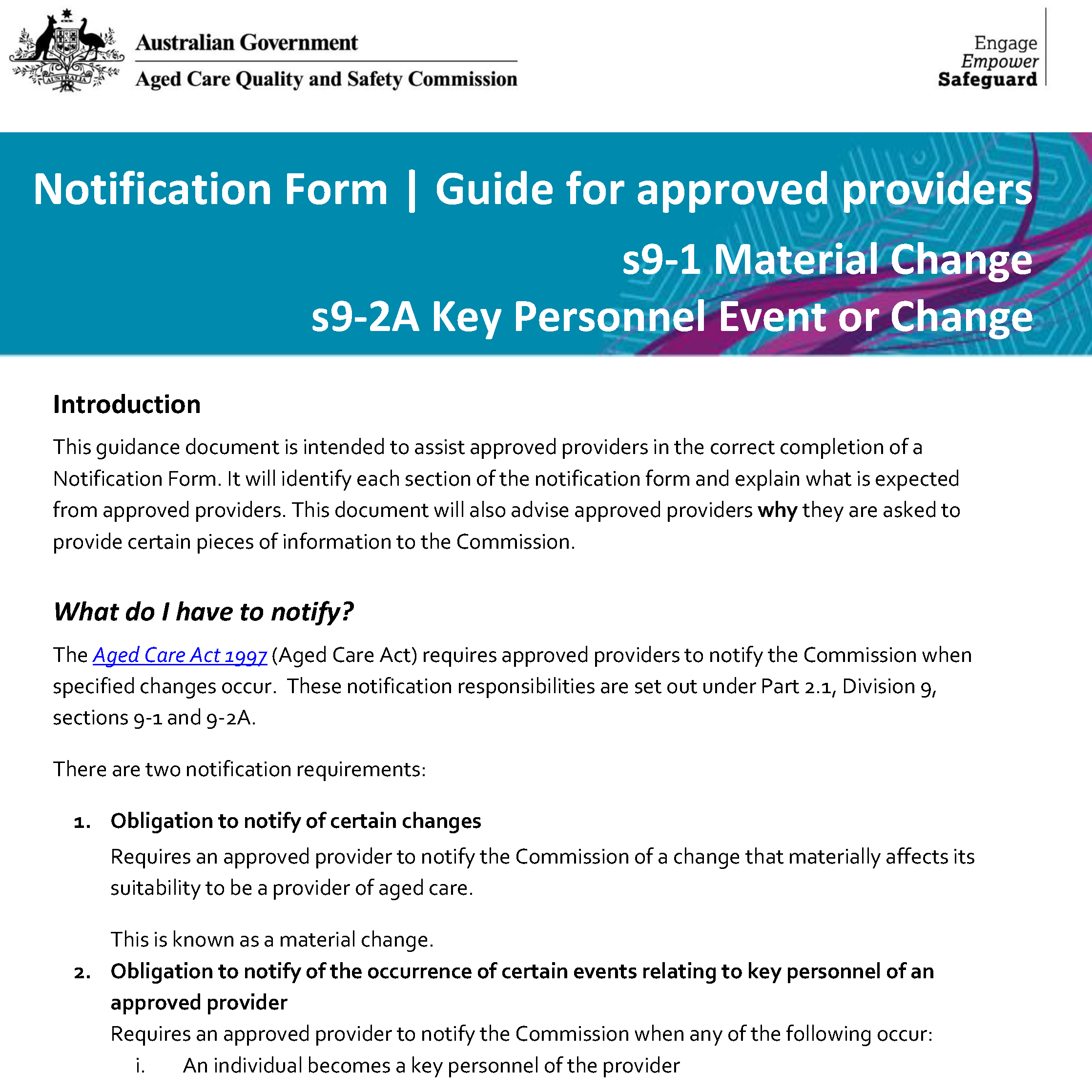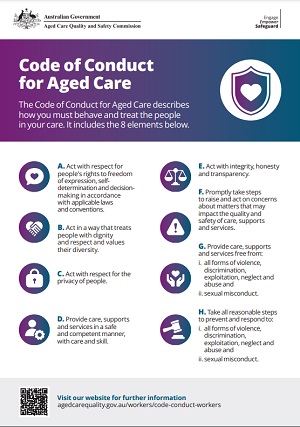The case studies for approved providers and their workers have been designed to inform and educate the workforce about the 8 elements of the Code of Conduct for Aged Care (the Code). A range of case studies provide examples both consistent and inconsistent with the Code.

The case studies for consumers have been designed to inform consumers and their families about the new Code of Conduct for Aged Care (the Code). The resource explores the 8 elements of the Code, listing some examples of expected behaviour for each element, as well as a case study example.

Download a PDF of the slides that were used in the 15 December 2022 webinar, Aged care sector reforms – current status and what’s next?

This document contains a summary of all available resources for Provider Governance as at 15 December 2022

This document contains a summary of all available resources for SIRS as at 15 December 2022

This document contains a summary of all available resources for Code of Conduct for Aged Care.

RB 2022-16 This Regulatory Bulletin outlines the changes to administration and management charges in the Home Care Packages (HCP) Program and the requirements for approved providers as set out in the changes to aged care legislation.

This is an application form for individuals to apply to the Aged Care Quality and Safety Commission to vary or revoke a banning order made against them.

This is an application form for individuals to apply to the Aged Care Quality and Safety Commission to vary or revoke a condition of a banning order made against them.

This document contains responses to questions asked during our webinar series on strengthening provider governance reforms.

This video introduces the provider governance obligations introduced on 1 December 2022
Transcript for 'Provider governance - provider responsibilities 1 December 2022'

This video is to give consumers, their representatives and families an overview of the Code of Conduct in Aged Care. It describes the behaviour expected of aged care providers, their governing persons (e.g. board members and Chief Executive Officers) and aged care workers. It describes how providers and the people who provide your care must behave and treat you.

This video introduces the Code of Conduct for Aged Care (the Code) to aged care workers and approved aged care providers.
Transcript of 'Code of Conduct for Aged Care'

On 1 December 2022, the Serious Incident Response Scheme (SIRS) was extended from residential aged care to include home care and flexible aged care depvered in a home or community setting.
This fact sheet for home services care recipients explains what the SIRS is, what is expected of providers, what a SIRS reportable incident is and how to seek help if needed.

This guidance document is intended to assist approved providers in the correct completion of a Notification Form.

The steps to take when an incident occurs in a home or community setting.

This guide for workers provides a quick introduction to the new Code of Conduct for Aged Care (the Code). It includes a weblink and QR code to find out more on the Aged Care Quality and Safety Commission’s website.
This resource is available in 25 different languages including: Arabic, Simplified Chinese, Traditional Chinese, Croatian, Dari, Dinka, Farsi, French, Greek, Hindi, Indonesian, Italian, Khmer, Korean, Kurdish, Pashto, Punjabi, Somali, Spanish, Tagalog, Tamil, Thai, Turkish, Urdu, and Vietnamese.

This document contains responses to questions asked during our SIRS for home services webinar series.

This poster provides a quick introduction to the new Code of Conduct for Aged Care (the Code). It includes a weblink and QR code to find out more on the Aged Care Quality and Safety Commission’s website.

A fact sheet that introduces the responsibility for providers to notify the Commission within 14 days about changes that materially impact their suitability as an approved provider and of a change to their key personnel.









